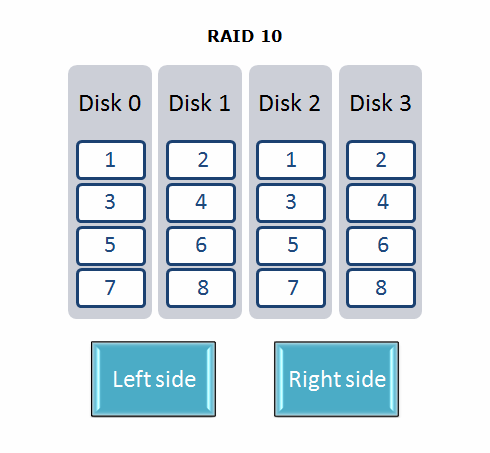RAID 10 Layout
RAID 10 can be created either using a hardware controller or using mdraid software in Linux.
Sometimes RAID 10 involves two hardware RAID 0 arrays which are merged into the final array using an operating system driver.
Typically an even number of disks is used to create RAID 10 as it is shown in the diagram:

It is obvious from the diagram that RAID 10 consists of two RAID 0 arrays (left and right).
As for the performance, the read speed increases by the factor of N in comparison with a single disk (where N - a number of disks)
because you can read data from all the member disks simultaneously.
The write speed is N/2 times faster as compared to a single disk because it is required to write two copies of data.
RAID 10 is a fault tolerant array.
The array can survive one disk failure even without a dramatic decrease in read speed and without losing write speed at all.
In such a situation RAID 10 performs better than RAID 5 which loses read/write speed significantly.
If two or more disks fail, the following can happen:
- Data is not lost if one complete RAID 0 still remains.
- Data is lost if both disks containing the same data fail.
Below, the probabilities of data loss are given for the cases of two or more member disks failures in RAID 10.
For the array of four disks:
- If two member disks fail, the probability to survive is 66%.
For the array of six disks:
- If two member disks fail, the probability to survive is 80%.
- If three member disks fail, the probability to survive is 40%.
|